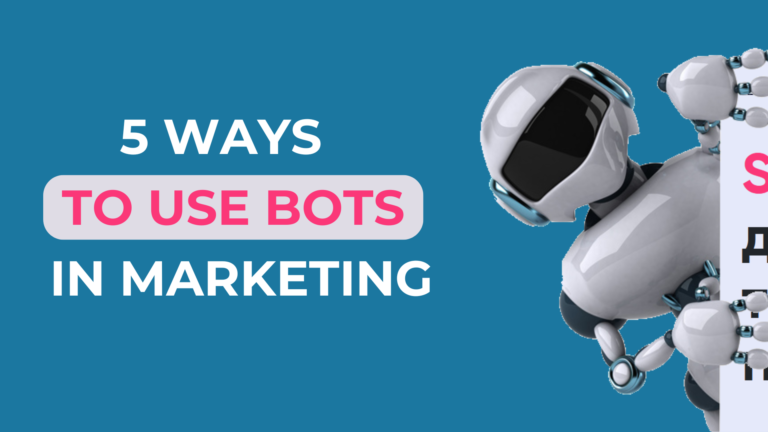Date of publication:
26 Jan. 24The Power Of Video Marketing In The Digital Age
The digital age has brought with it a wealth of opportunities for marketers, and video marketing has become one of the most influential and effective strategies. With the development of the Internet and the popularity of social media, video has become a powerful tool for capturing the attention of the audience and establishing a close connection
Video marketing is a marketing strategy that uses video content to attract, retain and engage with the audience in order to achieve specific business goals. The main objective of video marketing is to create and distribute videos that can attract the attention of potential customers, tell them about a product or service, establish an emotional connection with the audience, increase brand awareness and ultimately drive sales.
Video marketing has become especially popular in the age of the internet and social media, where users actively consume video content.
Examples of video marketing include YouTube commercials, product reviews, presentations of the company and its values, training videos, and much more. Successful video marketing campaigns are usually based on high-quality content, an understanding of the target audience, and the optimal choice of platforms for video distribution.
Advantages of video marketing
Video marketing offers many benefits for companies and brands, helping them to effectively engage and interact with their audiences.
Main advantages:
- Visual engagement and audience attention. Video content is vivid, dynamic and attractive. It is more effective at grabbing users’ attention than text or static images.
- Emotional impact. Video can evoke emotions in viewers, making it a powerful tool for creating strong connections with the audience. Positive emotions associated with a brand can increase loyalty and brand awareness.
- Increase the time spent on the website. Content with video often keeps users’ attention on the site longer, which helps to improve engagement rates and SEO rankings.
- Expanded reach and wider audience. Video content is popular on social media and video hosting sites, which helps brands reach a wider audience and increase awareness.
- Improving SEO positions. Video content has the potential to rank higher in search results, which can lead to an increase in organic traffic to a website.
- Increased conversion rates. Video can increase conversions because it demonstrates the product better. Its benefits and uses, which convinces potential customers to make a purchase.
- The ability to tell complex information. Video can help explain complex products or services, training materials, and processes in a clear and simple way.
- The ability to interact with the audience. Video can be used to organise live broadcasts, webinars, and polls, which promotes active interaction with the audience and strengthens customer relationships.
- Viral potential. High-quality and interesting
The use of video marketing in combination with other marketing strategies can significantly enhance an advertising campaign and contribute to the successful promotion of products and services.
Types of video marketing
Video marketing provides a variety of ways to use video content to promote products, services and brands.
- Promotional videos. These are short videos created to promote products or services. They can be placed as an advert before watching other videos on YouTube or other platforms, as well as on social media or on a company’s website.
- Product reviews. Video reviews are a detailed story about a product or service, its characteristics, features, and benefits. It helps potential customers make an informed purchase decision.
- How-to videos. Training videos that demonstrate how to use a product or perform certain tasks.
- Webinars and online trainings. Live broadcasts and recorded webinars that teach the audience certain knowledge or skills. Webinars are the best way to interact with participants and answer their questions in real time.
- Brand stories and corporate videos. Videos that tell the story of the brand, its values, mission, and company culture. It helps to establish an emotional connection with the audience and increase brand loyalty.
- Videos with reviews and recommendations. Videos where customers talk about their experience of using a product or service. Customer reviews and recommendations help to influence the decisions of potential buyers.
- Live broadcasts and Q&A sessions. Live video broadcasts are real-time interaction with the audience. Q&A sessions allow you to answer questions from the audience and learn from their needs.
- Video content for social media. Short videos created specifically for social media platforms.
These are just some of the many ways video marketing can be used. It’s important to adapt the chosen video format and style to your target audience and product or service features.
Developing a video marketing strategy
Developing a video marketing strategy is an important step that allows you to define the goal, target audience, types of content and video distribution channels, as well as an action plan for its implementation.
Steps to implement the strategy:
- definition of goals;
- research the target audience;
- selecting types of video content;
- planning and developing a content plan;
- investing in quality;
- identifying channels to expand video content (focus time and effort on platforms where the target audience is most active);
- optimizing videos for SEO (use keywords in the title, description, and tags. This will help improve the video’s position in search results);
- interaction with the audience (timely response and processing of reviews and comments will help strengthen relationships with customers);
- measurement of results (analyzing the number of views, engagement, conversions and other metrics helps to evaluate the effectiveness of the video marketing strategy and adjust it);
- contextual optimization (taking into account the context of video use. For example, a YouTube video may be more dynamic and entertaining, while a webinar video may be more educational and informative).
Understanding the target audience, a variety of video formats, a detailed plan for a certain period of time, seasonal features, video quality and other factors will help you achieve your business goals and attract the interest of your target audience.
Tips and best practices for video marketing
Creating an effective video marketing strategy and maximizing its potential is impossible without tips and best practices.
- Ask right away. From the first seconds of the video, you need to show how a product or service can solve a problem or meet the needs of the audience.
- Create content that evokes emotions. Emotional videos are easier to remember and make the audience feel a deeper connection to the brand.
- Brief and concise presentation of the idea. Modern users have limited attention spans, so you should create videos that are as short as possible, but at the same time informative and interesting. Personalise your content. Create content that is tailored to the interests and needs of the target audience.
- Story structure. A well-structured plot helps to keep viewers’ attention until the end of the video.
- Optimisation for mobile devices. A well-optimised video for different mobile devices guarantees user attention.
- Choosing the right platforms. You should focus on the platforms where your target audience is most active.
- Analyse the results. Continuously tracking and analysing the results of your video marketing strategy will help you understand what works and what doesn’t and make adjustments to future campaigns.
The Bottom Line
Video marketing is a powerful tool in today’s digital age. Its power lies in the ability to capture the attention of the audience, create an emotional connection with customers and increase brand awareness.
When developing a video marketing strategy, you should take into account the interests and needs of your target audience, as well as choose the right types of content and platforms for its distribution. Emotional, creative, and personalised videos are more likely to hold the audience’s attention and stimulate customer engagement.
To succeed in video marketing, it is important to create high-quality and optimized content that meets the interests and needs of your target audience. Analyzing the results will help you improve your strategy and achieve maximum results.



